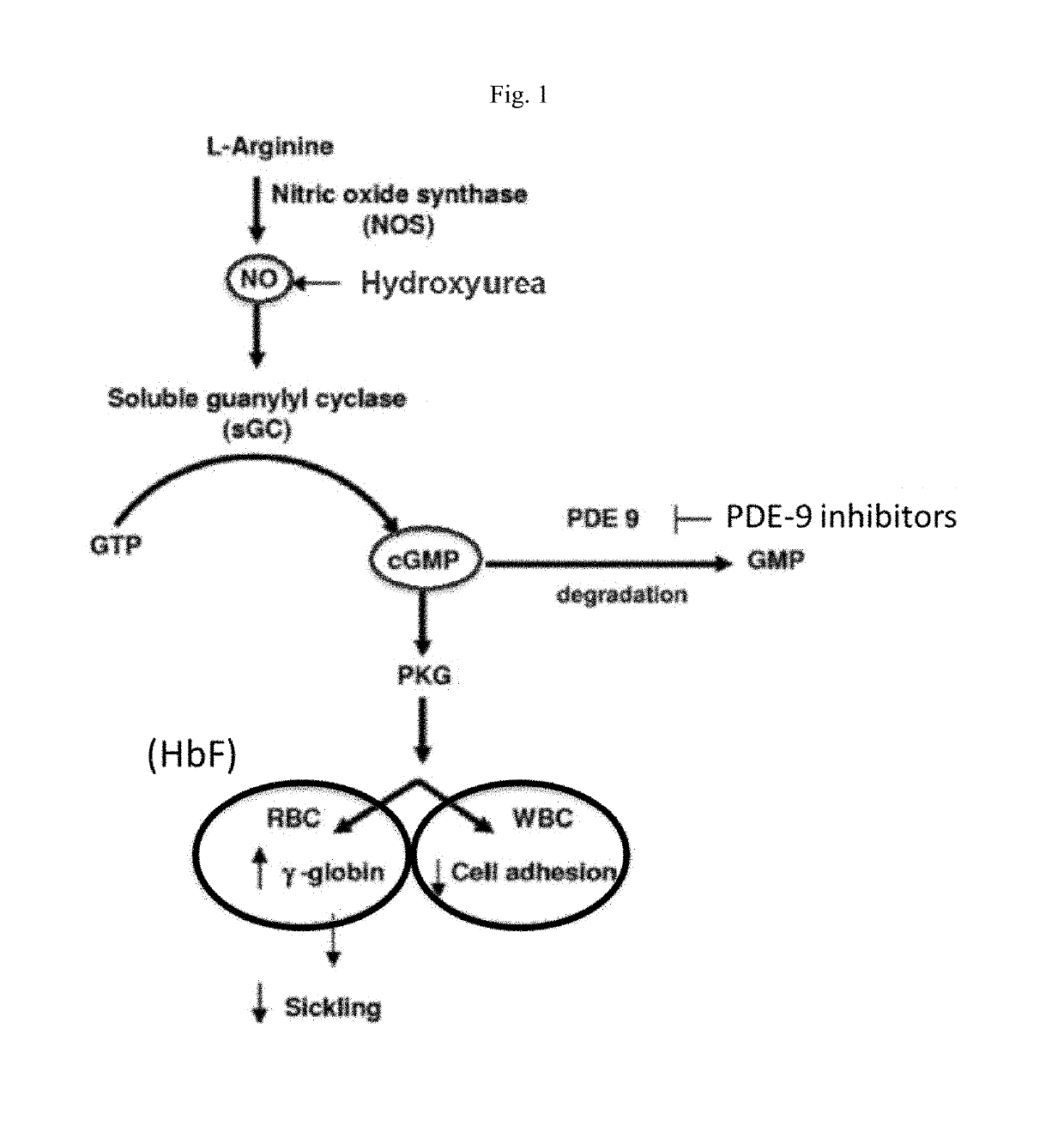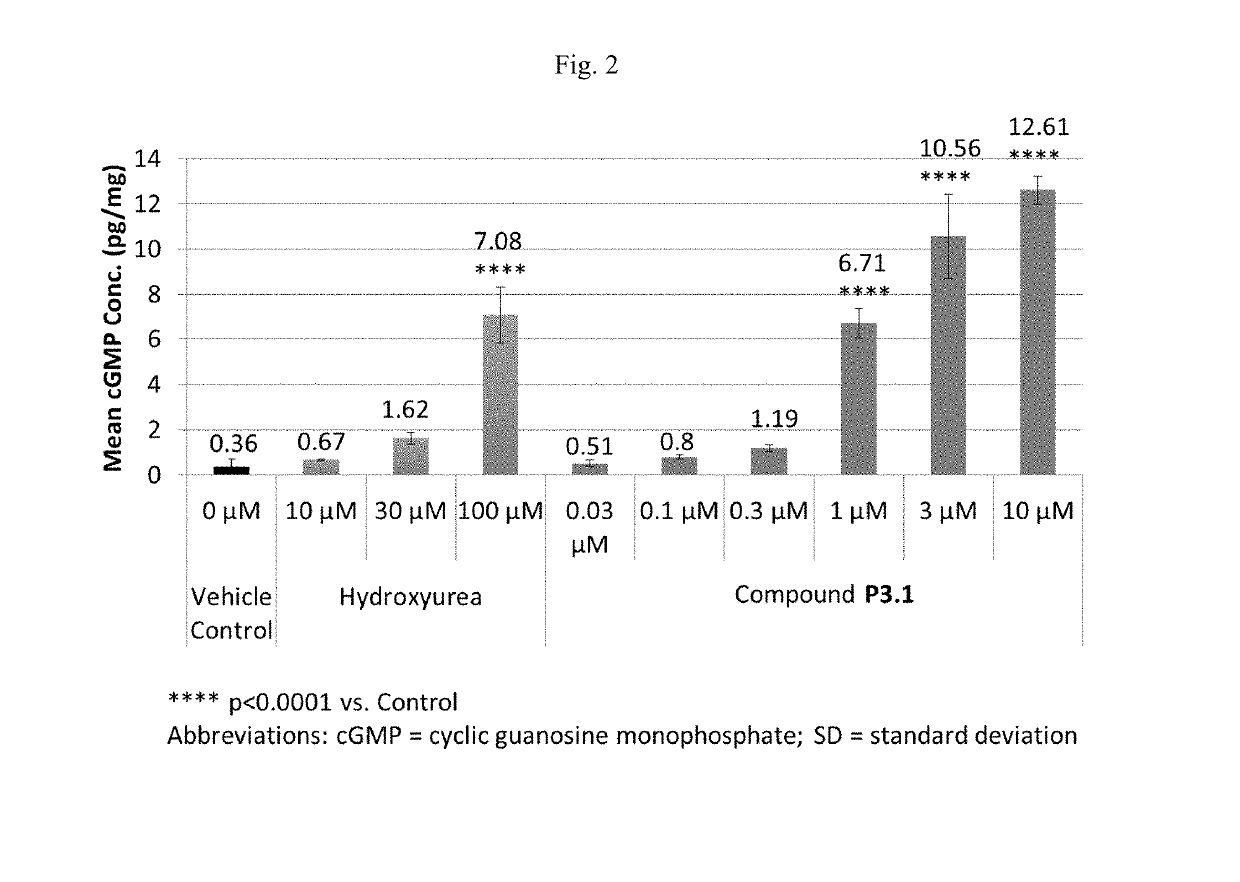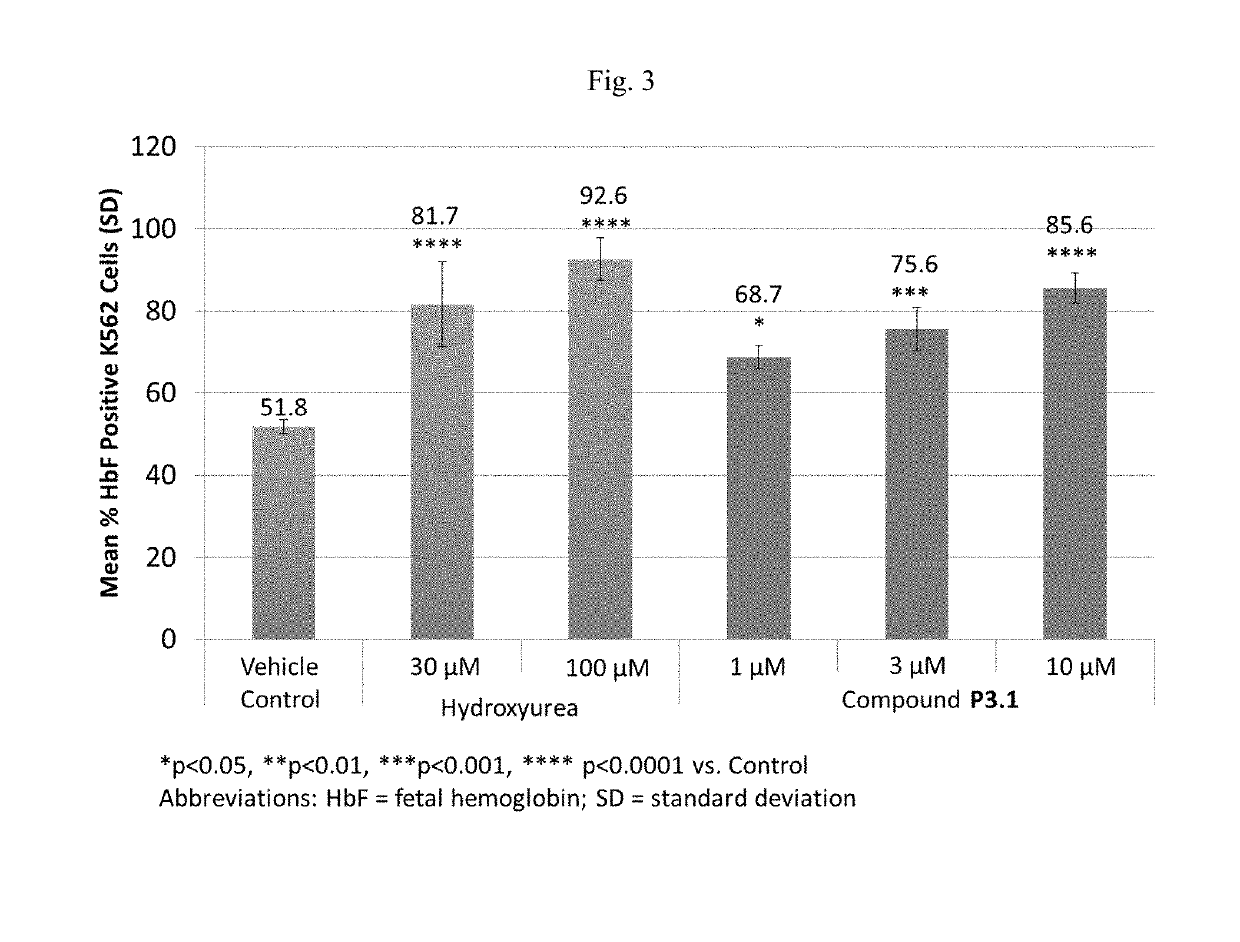Pde9 inhibitors for treatment of peripheral diseases
a phosphodiesterase and inhibitor technology, applied in drug compositions, amide active ingredients, extracellular fluid disorders, etc., can solve problems such as cardiac and reproductive side effects, and achieve the effect of avoiding potential centrally-mediated side effects
- Summary
- Abstract
- Description
- Claims
- Application Information
AI Technical Summary
Benefits of technology
Problems solved by technology
Method used
Image
Examples
example 1
of PDE9 Inhibitors
[0242]The compounds of the present invention may be prepared with methods disclosed in WO 2013 / 053690 and / or WO 2013 / 110768. Compounds P1, P2, P3 and P4 may be synthesized as described below.
Overview Schemes
[0243]
Synthetic Procedures
List of Abbreviations
[0244]aq aqueous
NBS N-bromosuccinimide
[0245]Boc tert-Butoxycarbonyl
° C. degrees Celsius
CDI N,N-carbonyl dimidazole
δH chemical shift in parts per million downfield from tetramethylsilane
DCM dichloromethane
Dppf bis(diphenylphosphino)ferrocene
DIPEA N,N-diisopropylethylamine
DMF N,N-dimethylformamide
[0246]eq equivalent
Et ethyl
EtOAc ethyl acetate
g gram(s)
HPLC high-performance liquid chromatography
h hours
Hz hertz
J coupling constant (in NMR spectrometry)
LCMS liquid chromatography mass spectrometry
LiHMDS Lithium bis(trimethylsilyl)amide
μ micro
m multiplet (spectral); meter(s); milli
M+ parent molecular ion
Me methyl
MeCN acetonitrile
MeOH methanol
MHz megahertz
min minute(s)
mL...
example 2
and formulation of Compound P3.1
[0425]Compound P3.1 is an enantiomer of P3. Chemical Name: 6-[(3S,4S)-4-methyl-1-(pyrimidin-2-ylmethyl)pyrrolidin-3-yl]-3-tetrahydropyran-4-yl-7H-imidazo[1,5-a]pyrazin-8-one or (3S,4S)-6-(4-methyl-1-pyrimidin-2-ylmethyl-pyrrolidin-3-yl)-3-(tetrahydro-pyran-4-yl)-7H-imidazo[1,5-a]pyrazin-8-one.
Compound P3.1
[0426]Compound P3.1 was synthesized according to the method in Example 1. The synthesis comprises Suzuki coupling, reduction in the presence of Palladium catalyst, deprotection, and alkylation to produce Compound P3.1.
[0427]A stability study has been completed on Compound P3.1. Samples of Compound P3.1 were aliquoted into double-walled polyethylene pouches, which were tied off and then heat-sealed in an aluminum pouch. Samples were stored at ambient temperature and at 40° C.−45° C. (no humidity control) with testing performed over a 3-month period.
[0428]There were no changes to appearance or purity of the material at either room temperature or accele...
example 3
Testing—PDE9 and PDE1 Inhibition Assays
PDE9 Inhibition Assay
[0434]A PDE9 assay may for example, be performed as follows: The assay is performed in 60 uL samples containing a fixed amount of the relevant PDE enzyme (sufficient to convert 20-25% of the cyclic nucleotide substrate), a buffer (50 mM HEPES7.6; 10 mM MgCl2; 0.02% Tween20), 0.1 mg / ml BSA, 225 pCi of 3H-labelled cyclic nucleotide substrate, tritium labeled cAMP to a final concentration of 5 nM and varying amounts of inhibitors. Reactions are initiated by addition of the cyclic nucleotide substrate, and reactions are allowed to proceed for one hr at room temperature before being terminated through mixing with 15 uL 8 mg / mL yttrium silicate SPA beads (Amersham). The beads are allowed to settle for one hr in the dark before the plates are counted in a Wallac 1450 Microbeta counter. The measured signal can be converted to activity relative to an uninhibited control (100%) and IC50 values can be calculated using the Xlfit extens...
PUM
| Property | Measurement | Unit |
|---|---|---|
| Fraction | aaaaa | aaaaa |
| Fraction | aaaaa | aaaaa |
| Fraction | aaaaa | aaaaa |
Abstract
Description
Claims
Application Information
 Login to View More
Login to View More - R&D Engineer
- R&D Manager
- IP Professional
- Industry Leading Data Capabilities
- Powerful AI technology
- Patent DNA Extraction
Browse by: Latest US Patents, China's latest patents, Technical Efficacy Thesaurus, Application Domain, Technology Topic, Popular Technical Reports.
© 2024 PatSnap. All rights reserved.Legal|Privacy policy|Modern Slavery Act Transparency Statement|Sitemap|About US| Contact US: help@patsnap.com










